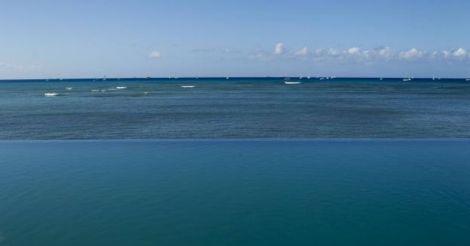New York: The formation of a distinct pattern of sea surface temperatures in the middle of the North Pacific Ocean can predict an increased chance of summer heat waves in the eastern half of the U.S up to 50 days in advance.
The scientists believe that the new technique could improve existing seasonal forecasts, which do not focus on predicting daily extremes.
"Summertime heat waves are among the deadliest weather events, and can have big effects on farming, energy use and other critical aspects of society," said lead author Karen McKinnon from US National Centre for Atmospheric Research (NCAR) in Colorado, U.S.
"If we can give city planners and farmers a heads-up that extreme heat is on the way, we might be able to avoid some of the worst consequences," McKinnon noted.
The pattern that the researchers discovered is a contrast of warmer-than-average water coming up against cooler-than-average seas.
When it appears, the odds that extreme heat will strike during a particular week - or even on a particular day - can more than triple, depending on how well-formed the pattern is, the study said.
The findings were published in the journal Nature Geoscience.
For the study, the U.S scientists divided the country into regions that tend to experience extreme heat at the same time.
They then focused on the largest of the resulting blocks: a swath that stretches across much of the Midwest and up the East Coast, encompassing important agricultural areas and heavily populated cities.
The researchers looked for a relationship between global sea surface temperature anomalies - waters warmer or cooler than average - and extreme heat in the eastern half of the U.S.
A pattern popped out in the middle of the Pacific, above a point roughly 20 degrees north latitude. The scientists could find the particular configuration of ocean water temperatures, which they named the Pacific Extreme Pattern, not only when the eastern U.S was already hot, but also in advance of that heat.
"Whatever mechanisms ultimately lead to the heat wave also leave a fingerprint of sea surface temperature anomalies behind," McKinnon said.
(With agency inputs)
























 The researchers looked for a relationship between global sea surface temperature anomalies - waters warmer or cooler than average - and extreme heat in the eastern half of the U.S.
The researchers looked for a relationship between global sea surface temperature anomalies - waters warmer or cooler than average - and extreme heat in the eastern half of the U.S.